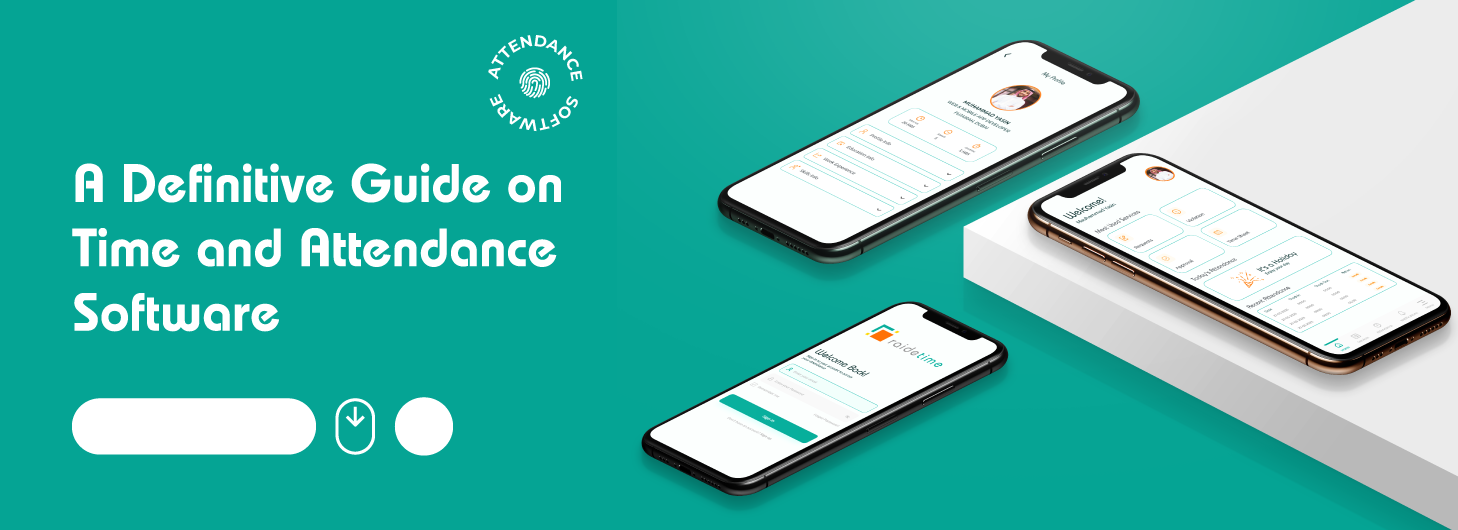Written By
Zubair Shah
2025-Jan-14
What Defines Successful Employee Management from Start to Finish?
The people in a company are more important than its services. Successful companies have efficient
systems for employee management behind the scenes. Human resources manage
everything from recruitment to retirement.
This process can drive success. Employees management is not just
limited to set specific tasks but also extends into their development,
motivation and commitment throughout
their careers. Managing an employee can be considered in all its terms-from
hiring to letting them go.
Think of it as writing a story, with each employee bringing unique
potential. The journey begins with hiring
the right candidate and ends with a legacy of knowledge and expertise.
Recruitment and Hiring
Every great story starts with the right characters. Recruitment
sets the foundation for a strong workforce and a successful journey of a
company.
1.Workforce Planning and Job Analysis:
Think of workforce planning as designing a blueprint before
building. It ensures that the appropriate individuals are occupying the
appropriate positions. Job analysis identifies the skills and tasks needed to
align talent with company goals.
For instance, when a company is launching a new
product, the analysis will reveal the need for creative marketers, skilled
engineers, and efficient project managers.
2.Artful Recruitment Methods:
Recruitment is like creating a blockbuster film. Companies now
leverage social media and campus hiring drives to attract top talent. For example, a company showcasing its
inclusive culture on LinkedIn, creating a buzz that draws in candidates who
align with its values. The goal is to craft a narrative that makes talented
individuals eager to join.
3.Onboarding Processes:
This is where the story takes a turn. Onboarding is key. Here new
team members are made to understand that their work contributes to deliverables
beyond their understanding.
For example, consider a case where new hires get welcome kits and have
one-on-one sessions with their managers and a clear blueprint on what will
happen in their first 90 days. These efforts all ease the transition and
actually lay the groundwork for future engagement.
Onboarding in this smooth phase at the end of hiring makes the
newbies become part of the company culture without difficulty. This step sets
the stage for a rich, immersive experience that drives success from the start.
Employee Onboarding and Orientation
The initial impression is the final one. Employee orientation
determines, either that moment or later, whether workers will feel engaged or
become engaged employees.
1.Effortless Onboarding:
Suppose a person stepping into a new office and being welcomed
warmly and escorted step-by-step through the process of guidance and
onboarding. From filling out forms to meeting the team, the experience feels
smooth and organized.
But effortless onboarding goes beyond just tasks, it creates a
sense of belonging. Big organizations involve advanced tools such as Trello and
Slack so that their new employees may learn to work and know their co-workers
in no time.
2.Introducing Company Culture:
Considering a new employee being introduced to a storytelling
session where senior colleagues describe the company's journey, this is what a
strong culture can create, it can act as glue for the employees. These personal
stories knit the new hire into the culture, giving them a sense of purpose and
alignment with the organization’s values.
3.Why Onboarding Matters for Retention:
Well-planned onboarding is also a good investment for retention.
Studies have shown that structured onboarding programs have up to 50 percent
better retention rates. For example, at a tech company, new hires in the first
year are assigned to a mentor. This guidance helps employees integrate smoothly, reducing turnover and nurturing
long-term loyalty.
With the right onboarding, employees are set for growth.
Development and training programs ensure they thrive in their roles and
continue to grow within the organization.
Employee Development and Training
Growth fuels loyalty and productivity. Companies that invest in their
employees’ growth often find that the returns extend far beyond immediate
performance.
1.Skill Enhancement and Career Growth:
Suppose a junior software engineer who dreams of becoming a tech
lead. With access to advanced coding workshops, leadership training, and
hands-on projects, their skills and confidence grow exponentially. Such
opportunities not only boost individual performance but also prepare the
organization for future challenges.
2.Continuous Learning for Employee Satisfaction:
Continuous learning keeps employees engaged and satisfied. Consider
a scenario where employees can access an e-learning platform tailored to their career goals. For example, a retail company that offers
modules on customer psychology finds employees applying new insights to
enhance customer experiences, which in turn increases the satisfaction rate.
3.Leadership Development Programs:
Great leaders aren't born, they are cultivated. The leadership
development programs identify high-potential employees and groom them for
future roles. For instance, a
multinational corporation rotates promising candidates through various
departments to ensure they gain diverse perspectives before assuming leadership
positions.
Once employees are ready to grow, the next step is helping them
manage their time effectively to maintain high productivity.
Time and Attendance Management
Every minute counts. Accurate tracking is essential to
maintaining fairness and productivity.
1.Modern Tools for Attendance Tracking:
Suppose a retail chain implementing biometric systems to streamline
attendance tracking. These systems eliminate the hassle of manual logs and
reduce errors. Geo-fencing technology
ensures employees mark attendance only within designated locations, adding a
layer of accountability.
2.Benefits of Automated Systems:
Automation is more than convenience, it’s a breakthrough. Consider
a manufacturing unit that uses AI-powered
attendance systems to monitor shift patterns. The insights gained help
optimize schedules, reduce overtime costs, and improve employee satisfaction.
3.Improved Productivity:
Efficient tracking promotes transparency. For example, an employee who knows their efforts are logged
accurately and fairly. Such systems build trust, motivating employees to focus
on their work without distractions.
Time tracking lays the foundation for performance management, where
the spotlight shifts to setting goals and encouraging excellence.
Performance Management
Setting clear goals drives success. Performance management helps
employees make meaningful contributions to the organization’s objectives.
1.Setting and Evaluating Goals:
Clear path to employees through SMART goals. For example, sales team wants to increase a quarterly
revenue by 20%. Employees can be encouraged by regular performance reviews
regarding their alignment with these objectives.
2.Constructive Feedback Mechanisms:
Feedback is an art. Consider a company implementing peer-to-peer
feedback sessions, allowing employees to gain insights from colleagues who
understand their day-to-day work. This builds a culture of trust and continuous
improvement.
3.Best Practices for Reviews:
Data-driven insights make evaluations objective. For instance, an HR platform that
aggregates performance data helps managers provide actionable feedback, nurturing
both individual growth and team success.
Performance management smoothly transitions into engagement
strategies, emphasizing the importance of a positive workplace culture.
Employee Engagement and Retention
Engagement is the heartbeat of success. A quality work environment is always
there for employees who are energetically engaged with what they do.
1.Building a Positive Workplace Culture:
A vibrant culture is a powerful magnet. Imagine a company
celebrating employee milestones, from work anniversaries to personal
achievements. This tiny act builds attachment and loyalty towards an
individual.
2.Retention Strategies That Work:
Retention isn’t just about perks, it’s about alignment. Consider a
startup offering flexible work hours, allowing employees to balance personal
and professional lives. This approach not only reduces burnout but also
enhances productivity.
3.Employee Satisfaction Programs:
Wellness programs, mental health initiatives, and skill-based
challenges keep employees engaged. For
example, a company that organizes quarterly hackathons sees improved
innovation and team spirit.
Competitive compensation and benefits support engagement and
retention, leading to loyalty on the part of employees.
Compensation and Benefits Management
Fair rewards inspire loyalty. Compensation and benefits are a very
important tool in attracting and retaining employees.
1.Competitive Compensation Packages:
Benchmarking has to be continuously done to remain competitive. For
example, an IT firm benchmarking industry standards to make sure that the
salaries are aligned with the market trends, hence becoming the best employer
choice.
2.Customized Benefits:
Relevant benefits that are aligned with employees' needs have an
impact. Imagine a company providing tuition re-imbursement for those seeking
advanced degrees, thus cultivating continuous learning with loyalty.
3.Reward-based Retention:
Rewards in the form of public recognition and monetary rewards
increase motivation. A hospitality company
that introduced a peer-recognition app reported 25% increased employee
satisfaction scores.
Compensation practices are integrated with compliance practices for
ethical and fair practices.
Compliance and Legal Requirements
Compliance ensures security in trusting
people. Respect for the rule of law helps keep employees and an organization
safe.
1.Compliance with Labor Laws:
Staying aware of labor laws shows ethical leadership. For example,
a retail company might conduct annual reviews to ensure it complies with wage
and hour regulations.
2.Inclusive Policies:
Anti-discrimination
policies and diversity training result in inclusive workforces. For example, a
tech firm’s diverse hiring practices resulted in a 40% increase in innovation
and market reach.
3.HR Compliance Checklist:
Regular audits and documentation ensure transparency. Companies
that prioritize compliance reduce risks while building employee trust.
The journey concludes with off boarding that’s a phase that
reflects an organization’s commitment to employees even as they depart.
Off boarding and Retirement
Endings matter too. A good exit from the company would stick
in the mind for good.
1.Conducting Exit Interviews:
Feedback during exit interviews provides valuable insights. A
company using this data to improve work-life balance policies saw a significant
drop in turnover rates.
2.Knowledge Transfer:
Structured handovers ensure continuity. Suppose a senior employee
mentoring their successor during the final weeks, preserving institutional
knowledge.
3.Maintaining Alumni Relations:
Alumni networks keep former employees connected. A professional
services firm leveraging its alumni network for referrals saw increased client
acquisition rates.
Managing employees combines strategy, empathy, and innovation. An
organization’s success lies in optimizing every stage, from hiring to
retirement. By optimizing these stages, companies can build a workplace where
every employee feels valued, engaged, and successful.
The journey begins with refining your processes. Ensure your hiring
practices attract the right talent, your onboarding integrates employees
effortlessly, and your development programs inspire continuous growth. With
every step, you’re not just managing employees, you’re creating a legacy of
success that benefits both the organization and its people.



